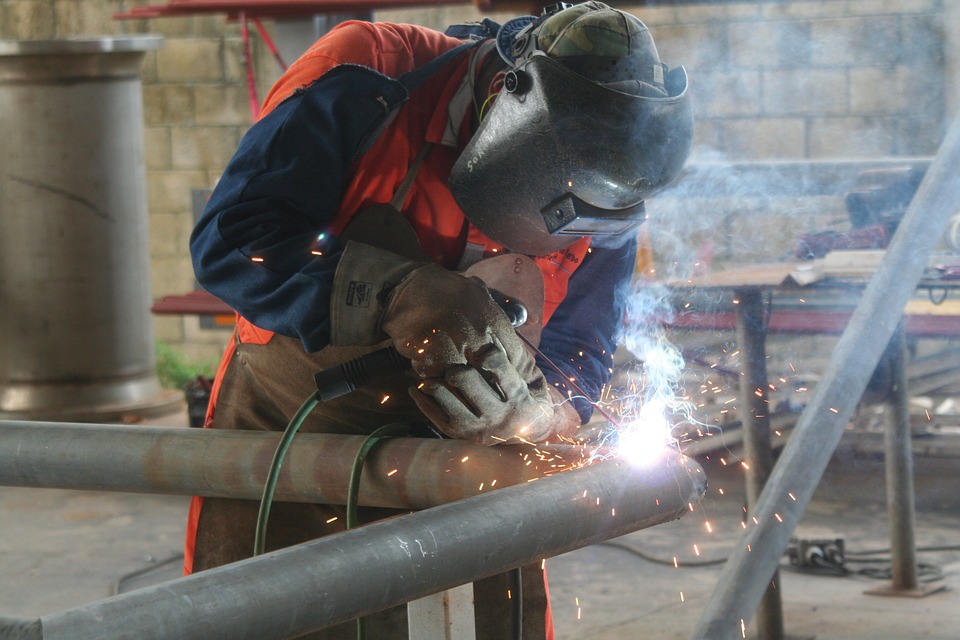Sangeeta Industries: Difference Between Welding and Sheet Metal Fabrication
If you are a sheet metal manufacturer, you must use welding and fabrication as common methods in the industry. To some of us, these two terms may seem similar but share a world of differences.
That’s why people often search for the difference between welding and fabrication. To cut out the confusion between the two terms, we are going to discuss the difference between welding and sheet metal fabrication.
Welding
Welding is the process of joining two pieces of metals by heating and pressing them together. There are mainly four types of welding: Gas Metal Arc Welding (GMAW), Gas Tungsten Arc Welding (GTAW), Shielded Metal Arc Welding (SMAW), and Flux-cored – Flux-cored Arc Welding (FCAW). The process can even be carried underwater by using any of the two methods: wet welding & dry welding.

Sheet Metal Fabrication
Sheet metal fabrication is a comprehensive process of turning flat sheets of metals (like aluminum and steel) into different structures or products by using a series of steps like cutting, punching, folding, welding, and assembling. The process allows the cutting, bending, or stretching of the metal sheets to nearly any shape.
Metal Fabrication Process: Explained
Sheet metal fabrication involves a series of steps to be followed to turn thin sheets of metal into functional products. Here’s is the breakdown of each step of the fabrication process:
Designing
Before starting the fabrication process, fabricators must plan out the design of the final products. Manufacturers can rely on hand-drawn diagrams (in the case of small projects) and even go for modern-day software, like AutoCAD or Solidworks, to gain complete accuracy and reduce complexity. For projects with multiple parts, a prototype can be created to ensure the quality of the final products and test their functioning in real-world applications.
Cutting
Multiple methods can be used to cut metal sheets, among which common ones are laser cutting, water jet cutting, and mechanical shearing. Choosing the right method is crucial to the fabrication process, owing to the very low tolerance for error.
While choosing the cutting method, there are multiple factors that a metal fabricator must keep in mind, like the type of metal used, the degree of precision required, etc.
Forming
This step includes folding, bending, stamping, punching, machining, and much more to ensure the formation of metal sheets into the right shape.
Assembling
After the metal sheets are formed into the desired shapes, they are assembled together to make the final products. Every separate part is fixed together with screwing, bonding, riveting, or welding.
Finishing
In this step, protective coatings like rust-resistance paints, glazes, or colors are applied to the finished products to increase their working life. Depending on the final product, the parts may also be polished and brushed to ensure a shiny and smooth outer surface.
Installing
Large fabricated products require professional help when it comes to their installation. Sheet metal manufacturers have the required skill, equipment, and expertise to install the fabricated products the right way and make sure that they deliver the expected performance.
Maintaining
Many manufacturers offer maintenance and repair as a part of their fabrication services. The services include cleaning of equipment, frequent inspections, and timely repairs.
Welding Process: Explained
Welding is the process of connecting two pieces of metals using heat and pressure. It is one of the steps of sheet metal fabrication and involves the use of specialized tools.
There are mainly two types of welding processes used in the fabrication industry: fusion welding and solid-state welding. While the former involves heating metal parts and adding a filler to fuse them into a joined entity, the latter includes joining metals without adhesive.
Here are some of the most common welding processes listed down:
- Shielded metal arc welding (SMAW) is a most commonly used fusion method, also referred to as stick welding, involving an electric current and consumable welding rods that act as fillers between the joined surfaces.
- Oxy-acetylene welding involves combining a tank of oxygen and one of acetylene with a torch nozzle. The flame heats the metal while a filler rod allows metal fusion.
- Tungsten inert gas welding (TIG) is known for delivering high-quality results. It is a “two-hand” procedure involving the use of a non-consumable tungsten electrode to weld.
- Gas metal arc welding (MIG) is a wire-feed welding method with a consumable rod fed from a continuous spool of the electrode wire.
Apart from the methods mentioned above, there are other welding methods a metal fabricator can use to weld different metals.
Final Thoughts
From small tools to large buildings, the metal fabrication process is used everywhere. Welding is undoubtedly one of the most crucial steps of the fabrication process that ensures the durability and reliability of the joint metals. While performing the processes, it is essential to wear the proper safety equipment like eye gear and face shields to avoid hazards such as aerosols, fumes, and vapors.
This content was originally published on the Sangeeta Industries website.

